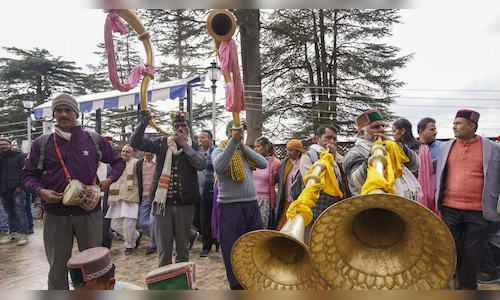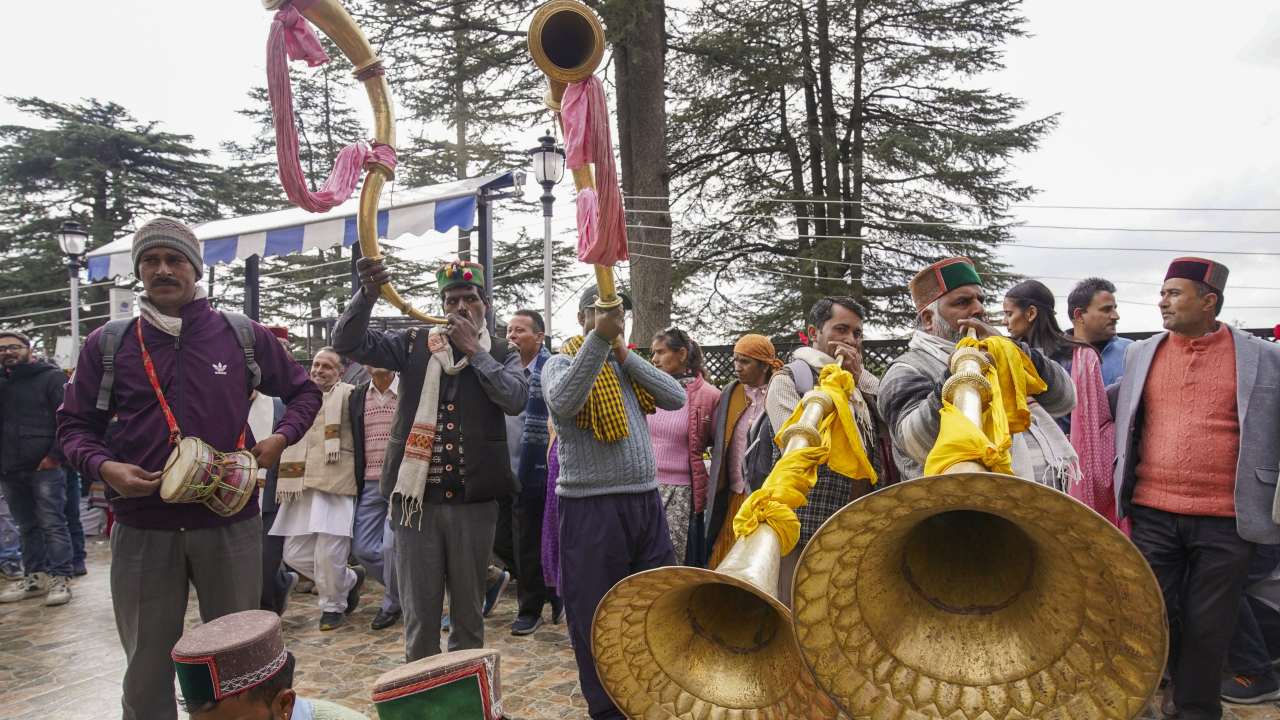

Known locally as Magho ko Tyohar, the month-long festival is distinguished by its division into three distinct mini-festivals, each marked by its unique customs and rituals.
The festival commenced on the eve of Posh Dwadashi, which fell on Friday this year. The first day of festivities is known as Bodhto, where the community prepares traditional dishes such as Pude, Bedoli, Patanday, Dhroti, and Gudoli, which are then offered to the deities.
The celebrations continue the following day at the ‘Sanjha Angan’, a communal courtyard that is typically owned by the village head or ‘Siyana’. In several villages, the festivities begin at temples dedicated to ‘Kul Devtas’ like Shirgul Maharaj, Bijat Maharaj, Mahasu Maharaj, and Thari Devi, a tradition that has been followed for centuries. This day is known as Bhatioj, as explained by Neetu Chauhan, a researcher on Hatti customs.
Also read | International Kite Festival: 143 flyers from 47 countries arrive in Gujarat
On Bhatioj, after a communal meal, villagers gather in the evening at the Sanjha Angan with traditional musical instruments, engaging in singing and dancing that continues until the early hours of the following day. The importance of women in Hatti culture is symbolised through the singing and dancing that takes place in every household throughout the month.
The next morning, men visit their married sisters, bearing gifts of meat, jaggery, and wheat flour, known as Saje ka Duna. The sisters, in turn, visit their parental homes to collect their share of the meat.
Married women also partake in the community’s festivities, joining in the Geet — a musical celebration where Hatti composers present newly composed songs.
Also read | Makar Sankranti 2025: Best places to witness the magic of the festival of kites
The festival’s grandeur reaches its peak on the eighth day with the celebration of the Khoda festival, a highly anticipated event where friends and family are invited for a feast. After the conclusion of Khoda, the Boidoot celebrations begin, continuing until the end of the Magha month. As part of this tradition, every household invites every other family member and close relatives to a communal dinner at least once during the month.
Ram Rattan Tomar, a cultural activist from the Aanj Bhoj area, explained that this communal dining tradition is deeply rooted in the culture of the Hatti people.



